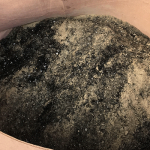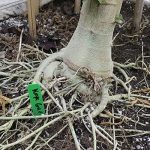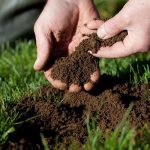
If you are growing outdoors, you need to be prepared and know how to protect your outdoor grow from heat, wind, rain, and other stressors that will undoubtedly show up at some point.
One of the biggest benefits of indoor growing is that you have complete control over the environment. You set up the perfect temperatures, air flow, and you’ll never have to worry about rain or hail.
But when you grow in the great outdoors, you’ll battle all these things. Sometimes, you’ll get lucky and won’t have much issue. Other seasons, you may experience all of these in the same month, depending on your climate.
These factors can not only slow growth and affect yield. Sometimes, they can destroy your entire crop, which can be incredibly frustrating later in the year when you’ve invested time and energy into your grow.
Let’s start by describing how to protect your outdoor grow from one of the most common issues you’ll experience: heat.
How To Protect Your Outdoor Grow From Heat
Heat stress is par for the course when growing outdoors. The outdoor growing calendar has you planting in April, harvesting around October.
This means you’ll be growing in June, July, and August - the hottest months of the year.
Your plants need plenty of light, and the sun is how they get it. But it can also harm them!
What Does Heat Stress Look Like?
If your plants are suffering from heat stress, it will be pretty obvious. Their leaves fold in, and almost start looking like little taco shells.
The longer they are left in this condition, the worse they will look.
Leaves will start twisting more and more, starting to curl in different directions and continuing to roll upwards.
How To Prevent Heat Stress In The First Place
You can take measures to prevent heat stress in the first place by keeping them watered, especially during heat waves. Keeping your media moist will keep your roots cool, which in turn keeps your foliage cool.
This doesn’t mean the media should constantly be drenched, though. You need to make sure you don’t overwater, as that will lead to issues of its own. We have an entire guide on proper watering practices, which you should check out!
You can also move plants to the shade, or even install a shade net, for the hottest parts of the day. You have to be careful about this, though.
The amount of sunlight your plants get affects when they start flowering. If they don’t get enough sunlight, they could start flowering prematurely.
The type of garden pots you use also plays a factor in heat stress. Black plastic pots absorb heat much more than tan fabric pots would.
How To Protect Your Outdoor Grow From Wind
Wind is another thing you need to protect your plants from when growing outdoors. Airflow is awesome, and a light breeze will do nothing but benefit your plants.
But if the wind gets too aggressive, it can snap your branches over, especially during flower when they start to get heavy.
This is as simple as setting up a trellis net across your plants with stakes. Here is a great example of what this should look like.
When excessive wind does strike, your trellis netting will only allow the branches to travel an inch or two, and then catch them. You’ll be facing much lower chances of snapping branches.
You can check out our guide on how to setup a trellis and plant support system for more information on this.
How To Protect Your Outdoor Grow From Rain Storms
A common question growers new to outdoor growing ask is whether they need to move plants to a covered area if a huge storm is coming. Can plants be harmed by excess rain on the foliage?
Rain is more detrimental to your grow during flower, as excess moisture around your buds can lead to serious mold issues, such as bud rot. So how do you protect your outdoor grow from rain?
Moving Plants Or Covering Them Up
You have two options when you see a big rain storm on the forecast - cover your plants up or move them to a covered area.
Both are fine, but just covering them up is easier. As your plants get bigger, moving them will become tougher and tougher unless you have them on a dolly or cart with wheels.
If you have your trellis system setup, its as simple as throwing a tarp over the top of the stakes to create a roof. This only works if your stakes are taller than your branches, though.
How To Protect Your Outdoor Grow From Frost

We have an entire guide on how to protect your outdoor grow from frost and cold weather. But, we wanted to quickly touch on it in this article as well.
This likely won’t be an issue if you are following the outdoor growing calendar. But early on in April, some climates will still struggle with cold mornings and frost.
You can prevent issues here by setting up your garden properly, and covering plants up at night.
You should also ensure your plants are old enough and hardened off before moving them outside if frost is a concern, as young plants are really susceptible to frostbite.
Tips To Increase Plant’s Resistance To Outdoor Environment Stressors
Aside from what we just covered, there are a few ways you can increase your plants’ resistance to stress.
You can add supplements to your existing nutrient package to strengthen your plants and you can find the right genetics.
Which Supplements Increase Plants Resistance To Stress?
There are a few different additives we carry here at Hydrobuilder.com that will help your plants chances of survival under stressful conditions. These include silica, kelp meal, and humic acid.
Silica
Silica is a plant superfood, and we have an entire guide on the importance of silica for plants. It does so many things to help your plants reach their genetic potential, one of which is increase resistance to pests, diseases, and stress.
It also directly increases your plants resistance to winds and storms, because it strengthens cell walls of your plant. Thicker, stronger branches are tougher to break. It also increases your plants resistance to heat stress.
On top of all this, silica increases nutrient uptake, growth rate, and more. If you were to only add one supplement to your regimen, it should be this one!
Kelp Meal
Numerous studies suggest that kelp meal can increase your plant’s resistance to heat stress, making it an excellent candidate if you struggle with extreme heat or drought conditions.
Its also a great fertilizer in general, increasing germination rates, nutrient uptake, along with increased resistance to frost and pests/diseases.
Humic Acid
The final supplement that can help you increase resistance to stress is humic acid. It has protective abilities, especially when combined with kelp meal.
By combining the two nutrients, they act synergistically and really strengthen your plants and cut back on the damage excess heat, wind, and other stressors can do.
We have an article talking about this nutrient, and comparing humic acid to fulvic acid if you want an in-depth look at what it can do.
Choose Hardy, Resistant Strains To Grow
To set yourself up for success, do a bit of research before grabbing genetics for your outdoor grow. Some strains are very finicky, and won’t do well when faced with stress.
On the flip side, some strains thrive in hot, dry climates. If you live in a climate where this is the case, these strains will get you huge yields, while cutting back on the amount of work you have to do to protect your garden.

























